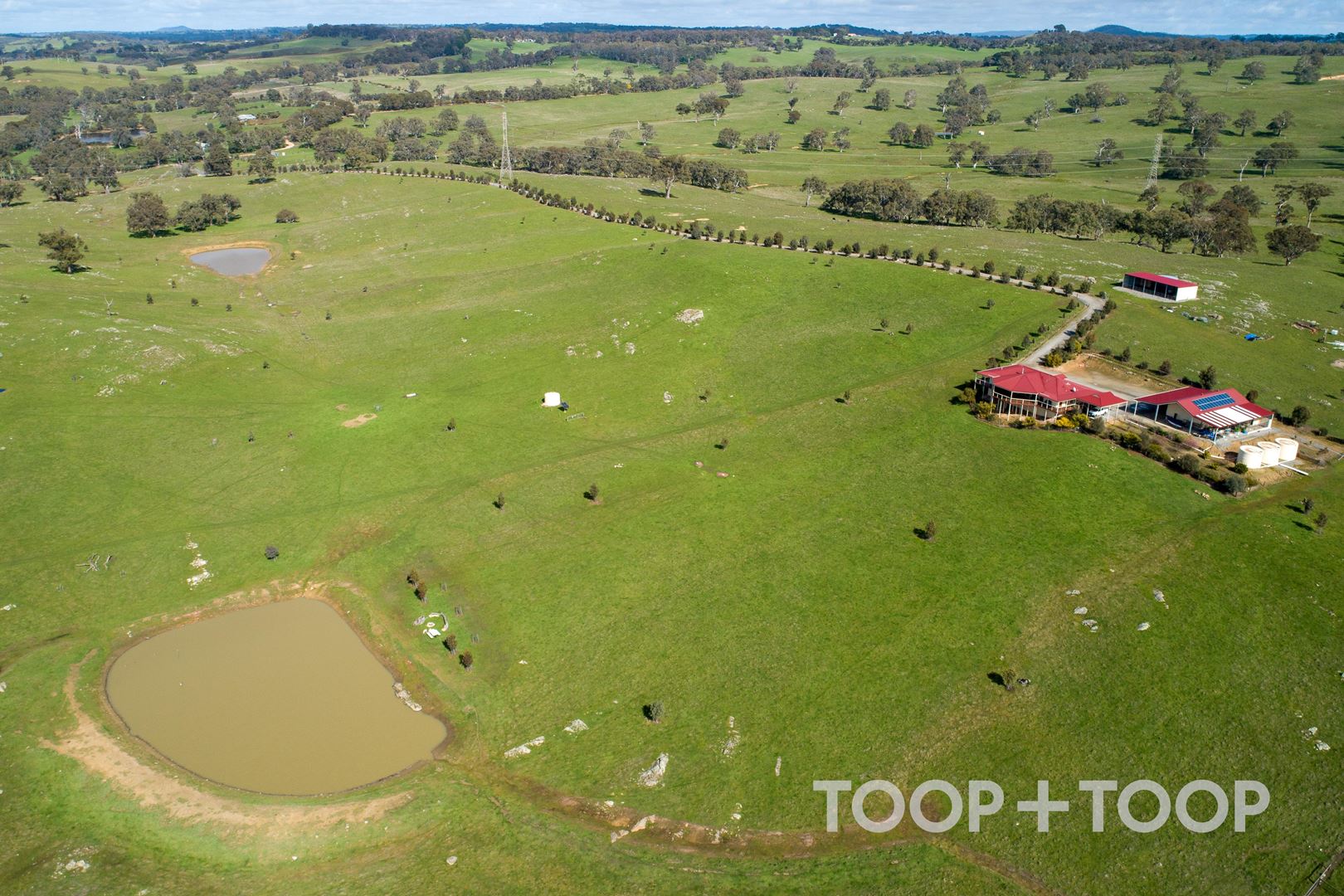January 08, 2024
Inaugural edition of 'Take Ten' newsletter with TOOP+TOOP RURAL
Welcome to the inaugural edition of 'Take Ten' with TOOP+TOOP RURAL.
Our revitalised team is thrilled to bring you this unique initiative, offering concise, timely news, insights and market forecasts each month. Each edition will feature a brief, impactful story, with links for further exploration if desired.
We recognise that not everyone in the rural sector is involved in property transactions, but we believe there's a strong demand for current, succinct news and factual commentary with a South Australian rural focus.
Our sales partners at TOOP+TOOP RURAL bring a wealth of experience from both farming and other industries, and we aim to make 'Take Ten' a valuable resource for all. In a world where fortunes can change overnight due to international events or local occurrences, staying informed is crucial. We hope 'Take Ten' will assist you in staying connected in the rural space.
{"type":"Link","id":"22VSvBj2ZHQlnwqtBsLUyk","numimg":0}Our team: Sam Wark, Matt Benson, Bronte Manuel & Sam Hayes
Click to articles:
A new era in land 'stewardship'
{"type":"Link","id":"XmSB9g3nBTBeKgb5R5dJc","numimg":0}There is a lot of talk these days about a revolution taking place on our farms, with many ‘traditional’ management methods being challenged by modern approaches that aim to achieve more sustainable and, apparently, climate-friendly outcomes.
RCS Australia (https://www.rcsaustralia.com.au/) is a leading provider of courses designed to assist farmers understand and embrace these new strategies when it comes to the management of livestock and land.
The term ‘regenerative’ is seen as somewhat polarising and, for many in this field, there are possibly better ways to describe the suite of diverse practices that continue to evolve.
In the words of Trevor Crook, RCS’s General Manager, they’ve been “helping thousands of farming families across Australia build resilient, profitable businesses since 1985”.
We ran some questions by the RCS team, and Chris Eccleston (Chief Marketing Officer) and Nic Kentish (Senior Advisor) kindly came back with some helpful answers.
Q. We are hearing a lot about new farming practices these days. What are the key elements of this ‘modern’ approach?
We like to call them ‘Advanced Farm Management Techniques’ – a holistic approach centred around enhancing land productivity through proven practices, including reducing soil disturbance, implementing diverse pasture and crop rotations, adopting cover crops, integrating livestock, and focusing on perennial plants. These methods aim to establish a balanced ecosystem that improves soil quality, increases biodiversity, and efficiently manages water resources. Such practices provide long-term benefits for farmers, including better pasture and crop yields and greater resilience against climate fluctuations. Additionally, the management of associated costs of maintaining pastures, livestock and lifestyle properties need to be matched to the owner’s goals.
Q. Are these new approaches still important on smaller farms?
Effective farm management techniques are essential, regardless of farm size. On smaller farms, say under 200 acres, implementing these proven practices can still have a substantial impact. Techniques such as strategic pasture and crop rotation, cover cropping, and integrated pest management can be tailored to smaller areas, leading to healthier soil and greater resistance to environmental stresses. Smaller farms often adapt more quickly to these practices, due to it being of a scale where tasks can be executed on time.
Q. What can a landholder do if they want to understand all of this better?
We think of it as exploring and learning proven agricultural practices, with landholders enhancing and improving their farm management systems through engagement with RCS Australia. This may involve participating in local agricultural workshops, joining farming networks, and seeking advice from agricultural extension services or local RCS mentors. Studying success stories and practical examples of these agricultural practices can also provide deep insights. Building a vibrant network within the farming community is vital, as it allows for the sharing of practical experiences and knowledge, essential for successful implementation.
Q. Do you know how much productive land might now be managed under this new regime?
Precise data on the acreage managed with these advanced techniques may vary, but there is a noticeable trend towards the adoption of these practices globally. Agricultural organisations and research groups are monitoring the growth in the use of these methods. This trend is becoming more apparent across different regions and sizes of farms, indicating a widespread movement towards advanced, effective farm management that prioritises long-term productivity and land health.
Q. And finally – if I want to begin my journey into this new frontier and do one of your courses, which one is the best place to start?
RCS offers several farm management courses, from online self-paced to seven-day in-person programs. The flagship programs are Farming & Grazing for Profit® and Grazing for Profit®.
In February 2024, RCS will be in Hamilton Victoria and then later in Naracoorte SA and then the Adelaide Hills. You can see a full range of 2024 courses by visiting their course map here:
https://www.rcsaustralia.com.au/farm-management-professional-development-map-australia/
Why are we all so nervous? Does an El Nino always lead to drought?
{"type":"Link","id":"48BbiGVdGGTypTzsawVywQ","numimg":0}With Matt Benson
I am sitting here in Inman Valley writing an article on the weather. It’s early December and I’m scratching my head. Last week I fired up the combustion heater because it was cold – with a couple of almost frosty mornings. This was after an unprecedented 48mm of rain. Right now, it is 30.7C outside, blowing a nasty northerly, but my weather apps tell me to expect another 40mm of rain over the next 3-4 days. I think we all agree that the weather feels like it’s ‘all over the place’.
The Bureau of Meteorology declared an El Nino weather event in mid-September, for the first time in eight years, which is meant to indicate that we were/are in for a particularly hot and dry summer, especially for those on the eastern seaboard. This announcement coincided with some unusually dangerous and ‘early’ fire conditions in southern NSW. It is fair to say a lot of people got very nervous about what might lie ahead - and with good reason.
Our family lived in Newcastle during the drought of 2017-2019 and we were confronted with unprecedented water rationing, but more seriously, images of the catastrophic effect it had on farmers.
At the end of the drought came the Black Summer bushfires that burned out 24 million hectares of land and killed nearly 450 people either directly or as a result of smoke inhalation. There were times when it felt like Armageddon and the photo below that I took over Burwood Beach on 4th December, 2019 shows not fog, but smoke – choking smoke. This lasted for weeks.
{"type":"Link","id":"3gMsUP19aAtZ7bIcjhUO30","numimg":0}Thankfully, after the drought, there were widespread and consistent rains across Australia and for some, production and price levels that broke all records. But, given this roller-coaster ride and with recent events still fresh in people’s memories, it is entirely understandable that when the El Nino was declared in September, many went into drought and fire preparation. A very real consequence, as some market analysts have suggested, was an over-correction in livestock prices - and they plummeted.
One of the logical questions from all of this is ‘does an El Nino weather event mean there will be a drought?’
There is some very interesting information on this subject, not least of which is a ‘SA Drought Hub’ podcast on the AgExcellence Alliance website with Dr Peter Hayman and Dr Chris Preston (go to via El niño is (probably) coming - what does it mean and what can you do about it? - AG Excellence ). Notably, this podcast was recorded in the middle of the year when the BOM were saying there was a 70% chance of El Nino. Well worth a listen.
For me, the key take from this presentation was that an El Nino event has occurred 25 times in the last 100 years, so every four years on average. On the other hand, the frequency of a bad drought is every 10 years. So, one can conclude, on average, that a bad drought will occur every 2.5 El Nino events or, another way of putting it, a 40% chance of drought with the declaration of an El Nino. Given that some livestock prices came off 75-80%, it might be very sensible to conclude there was an overreaction.
To delve deeper into what makes a drought, check out the following article on the website ‘The Conversation’ – again, very interesting.
Another very good paper on the subject is available through the University of Newcastle:
New Michell Wool MD talks to Take-ten
{"type":"Link","id":"BlZykHDYD44huhCw3FNQ9","numimg":0}The wool industry has had more than its fair share of ups and downs over the years, and some price shocks around 2019-20 certainly put growers back on their heels. For nearly as long as the growers have been weathering these fluctuations, SA-based Michell Wool (formerly G H Michell & Sons) has been processing and trading our famous fibre. Andrew Luxton joined Michells as their new Managing Director in July this year, and he’s kindly responded to some questions that we put to him about wool and sheep prices, and some thoughts about what’s in store next year.
Q. The EMI has come off a high this calendar year of just over 1400c/kg in February to now sit around 1150c/kg. This is a drop of just under 20%, which is significant in anyone’s language. What have been the key reasons for this fall?
China buys 89% of the Australian wool clip, so downturn in the Chinese economy has had a huge effect on the price of Australian wool. The country’s real estate sector is in crisis and makes an outsized share of its GDP. Demand for wool has also reduced worldwide. When it comes to the global wool market, if China sneezes, the Australian wool industry catches the flu!
Q. The traditional ‘South Aussie’ wools sit in the 21-24 micron range and come off the big-yielding merinos for which our state, and our studs, are famous. How have they fared this year, and how do you see the demand for these ‘middle-range’ microns next year?
South Australian growers have had drier conditions most of this year. This has influenced the Australian wool clip to test finer. There is 10 to 15% less wool in the 21-23 micron range this year compared to last year. The increase of supply in fine wool and decrease in coarse wool will result in the price gap narrowing from 20.0 micron to 23.0 micron.
Q. There’s been a lot of talk about how hard it is to get shearers. Are you seeing growers leaving the industry or switching to shedding breeds because of this? Is this impacting the supplies of wool at all?
There are 2000 shearers in Australia today compared to 10,000 30 years ago. Although it is a massive problem for the industry, our view is that we don’t think a large number of growers will switch to shedding breeds and impact supply. The shortage of shearers does however mean a significantly larger focus is required on the logistics of managing the movement of product from growers.
Q. Are you still seeing a positive and increasing demand for wool overseas? Is its niche as a natural, quality product resonating as we all become more concerned about synthetics, plastics, etc?
Demand for wool, although reduced from before COVID-19, is still strong throughout the world. I believe we have a great and unique product that will compete with other fibres for many years to come. There’s no other fibre like wool for its insulative and wicking characteristics.
Q. Has the unprecedented drop in sheep prices impacted at all? Are there concerns about a diminishing sheep population?
In the recent season, sheep meat gross value of sales is down from AUD5.5 billion to AUD3.5 billion, a 37% decline year-on-year. This is having a massive impact on Australian farmers and their incomes, resulting in a reduction in numbers. Wool’s gross value of sales is down from AUD2.5 billion to AUD2.4 billion, so relatively steady. Looking to 2024-2025, current sheep numbers are expected to contract, meaning a lower supply of wool.
Interview with Darren Thomas from Thomas Foods
{"type":"Link","id":"cnnPPWcDBGSX08TdAfkv5","numimg":0}Q. After record highs, the cattle market has had a meaningful correction this year. What were the main reasons for that?
Globally our product had become too expensive. Our customers were moving to other suppliers (US & South America). Australia is a price taker internationally and to steal on unpopular line off Keating “this was the correction we had to have”. After consecutive good seasons herd and flock numbers had built up and farmers were still able to sit on their stock through until late 2022. As we moved into 2023 we saw some drier conditions and eventually the supply picked up and the drop in prices reflected the increased supply coupled with the drop in international demand due to the record high prices of 2022.
Q. We have seen a welcome upswing in prices in the last couple of weeks. Do you think that will continue into 2024?
It took a while for the processors to gear up to the increases in supply throughout 2023. Most plant were operating at 70% and as the demand for our product internationally started to come back again post correction it took a little while to find the staff to build plants back up to capacity. What we are seeing is a demand lead recovery. International customers are again seeing value in our product.
Q. Beef prices in America are setting records. In a global trading industry – how can there be such disparity between the US and Aussie markets – especially with an affordable Australian dollar?
Currently the US and Australian livestock markets are at polar opposites. Although we have seen some recovery in Australian cattle prices in recent weeks due to much needed widespread rain in NSW and QLD, prices remain about 50% lower than the peaks of this time last year. The reasoning is the very cyclical nature of agriculture where the US is entering is fourth year of drought and the worst on record in some areas. This has led to herd liquidation in the US for four straight years. Now there is simply more demand for livestock than supply and we are seeing record cattle prices being paid in the US for the above forementioned reasons.
In Australia it is almost the complete opposite. Australian has had 3 very good seasons in most parts of the country, and this has led to the herd rebuilding rapidly. Whilst this cycle has occurred over the past 3 years, the lack of supply and pent-up demand from Covid pushed cattle prices to all-time highs. Due to the cyclical nature and some parts of the country teetering on the edge of drought (before recent rains) we have seen a large turn-off of cattle in the past six months which has caused and over supply. This coupled with tepid demand globally for protein due to slowing economies has led to one of the steepest declines in livestock prices in recent memory.
A further complicating factor that is not widely known is the inaction of the federal government to adequately assist industry in being able to access more skilled workers. With the unemployment rate at historical lows many plants in NSW and QLD lacked the labour force to be able to process the cattle therefore exaggerating the oversupply of cattle and hence the sharp decline in prices. If it was not for the PALM scheme which is very costly scheme and required companies to manage most of the burden of bringing people into the country and finding suitable accommodation in an already tight rental market the price decline could have been worse if that is possible. In saying that the scheme certainly has been a benefit, and we will see that in the 2024 year.
Q. The talk of El Nino obviously had a negative effect on the market – some say too much. What are your thoughts?
Whilst we understand the enormity that climate plays on our industry. I really think the BOM’s guidance (and that’s all it was) of an ensuing El Niño was largely sensationalized by the media and brought further panic to farmers mindset contributing to speed of the decline in pricing.
Another contributing factor outside of the “El Nino effect” was in January and February this year many of Australia’s export country destinations were experiencing severe cost pressures within their businesses. Australia fundamentally is an export nation from a Beef standpoint and was at the mercy of international trades forces and customers needing to lower their input cost (beef prices) to counteract runaway inflation that was griping the globe and forcing up the cost of business.
Q. Is the outlook for cattle farmers positive in 2024?
There has been a lot of negative talk around the domestic livestock market, and some have painted a negative picture for 2024. I have never had that view. Prices were too high and then over corrected, but the latter has triggered a demand lead recovery in our industry. The industry needs to be sustainable for farmers and for our international customers. I think we will be striking a happier balance in 2024.



